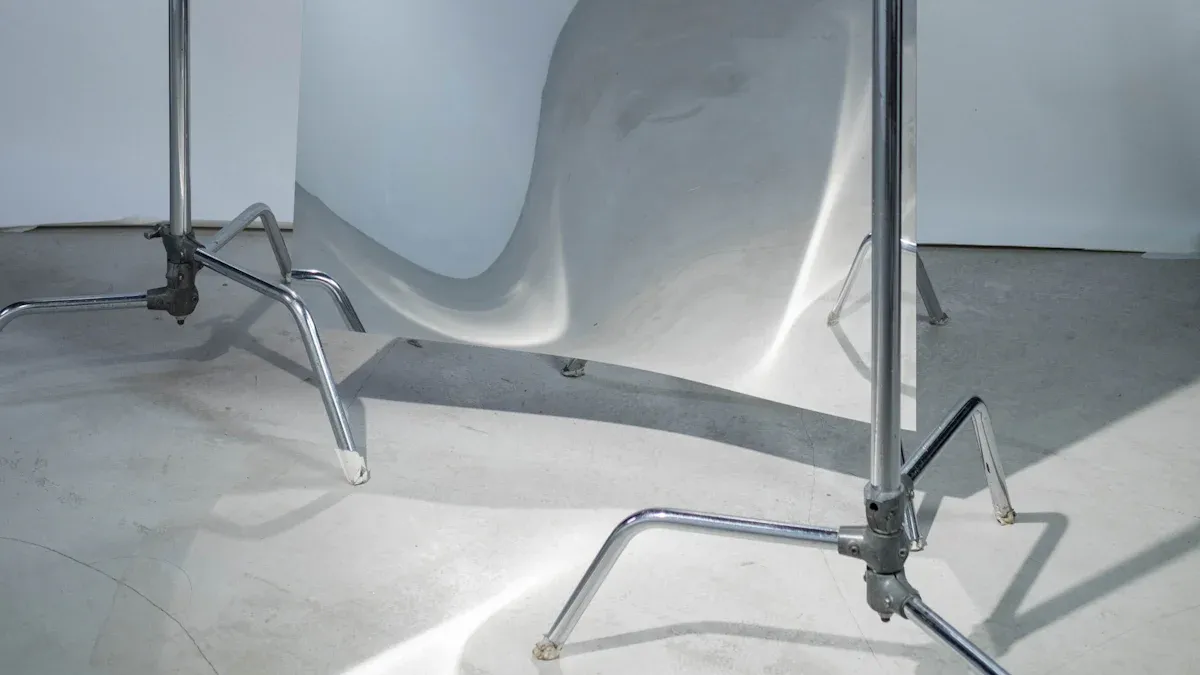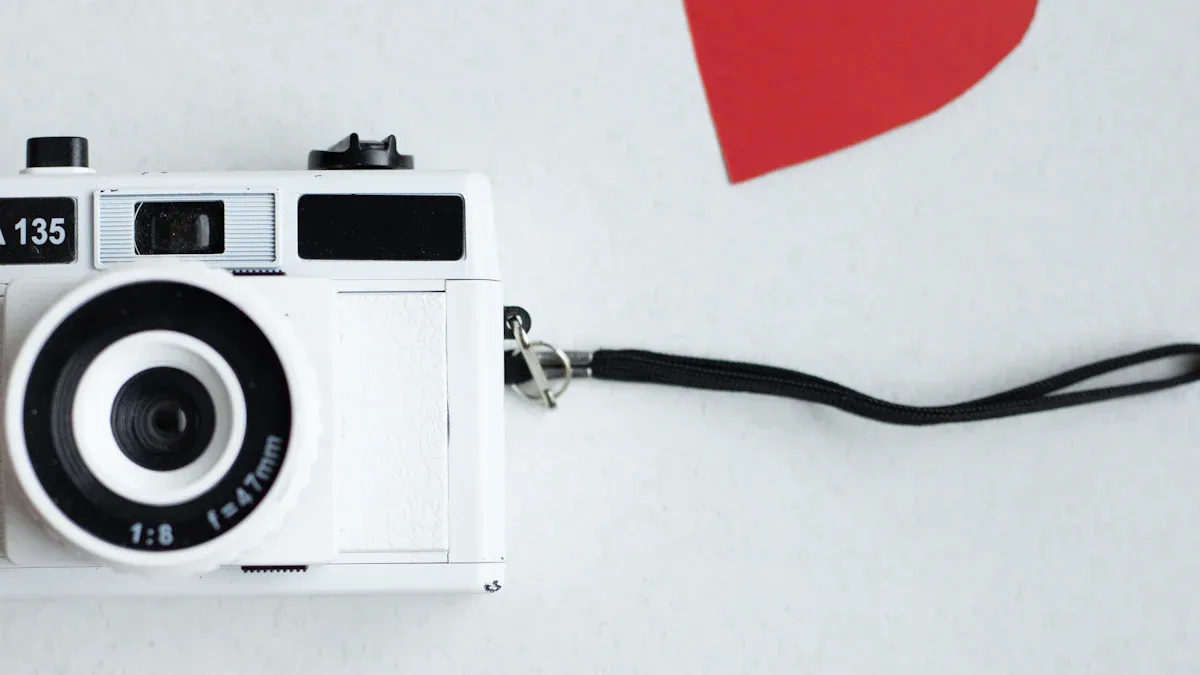How to Test Your Helius Flashlight’s Reflector to Ensure Maximum Efficiency

The reflector plays a vital role in your flashlight’s performance. It directs and focuses the light beam, ensuring maximum brightness and precision. Testing and maintaining the reflector in your Helius flashlight helps you achieve consistent, high-quality illumination. Regular care not only enhances efficiency but also extends the lifespan of your flashlight.
Key Takeaways
Check and clean your flashlight's reflector often to keep it bright. Use a cotton swab with rubbing alcohol to clean it well.
Test your flashlight's reflector every three months or after using it a lot. Use tools like light meters to measure brightness correctly.
Keep your flashlight in a cool, dry spot and use a case to protect it. Storing it right helps it last longer and keeps the reflector working well.
Tools and Preparation for Testing Your Helius Flashlight

Essential Tools for Reflector Testing
Testing your Helius flashlight’s reflector requires precision tools to ensure accurate results. These tools help you measure light output, beam focus, and overall reflector efficiency. Below is a table of essential tools and their functions:
Tool | Function |
|---|---|
Photometer | Measures the luminous intensity of a light source in a specific direction. |
Integrating Sphere | Distributes light evenly to measure overall light output accurately. |
Light Meter | Measures the amount of light intensity reflected off a surface. |
These tools are widely used for testing flashlights and other outdoor gear. If you frequently use your flashlight for outdoor activities, investing in these tools can help maintain its performance and durability. For rechargeable batteries, ensure they are fully charged before testing to avoid inaccurate readings.
Safety Precautions to Follow
Safety should always come first when testing your flashlight. Follow these precautions to protect yourself and your equipment:
Avoid direct exposure to the light beam. Flashlights, especially durable flashlights like the Helius flashlight, emit intense light that can harm your eyes.
Handle tools with care. Devices like photometers and light meters are sensitive and require proper handling to ensure accurate results.
Work in a controlled environment. Perform tests in a dark, enclosed space to eliminate interference from external light sources.
Inspect rechargeable batteries. Check for leaks or damage before use to prevent accidents or equipment failure.
By following these steps, you can safely and effectively test your flashlight’s reflector, ensuring optimal performance and flashlight durability.
Step-by-Step Guide to Testing Your Flashlight’s Reflector

Conducting a Visual Inspection
Start by visually inspecting the reflector of your flashlight. Look for any visible signs of damage, such as scratches, dents, or discoloration. These imperfections can reduce the reflector's ability to focus light effectively. Use a magnifying glass to examine the surface closely, especially if you notice uneven light distribution during use. Ensure the reflector is properly aligned with the light source, as misalignment can cause a distorted beam.
If you find dirt or dust, avoid touching the reflector directly with your fingers. Oils from your skin can leave smudges that further degrade performance. Instead, proceed to the cleaning step to restore its efficiency.
Cleaning the Reflector for Maximum Efficiency
A clean reflector ensures your flashlight delivers optimal brightness and focus. Use the following cleaning methods based on the condition of your reflector:
Cleaning Method | Effectiveness | Notes |
|---|---|---|
Solvents (trichlorethylene, acetone, ethanol) | Mixed results | Rinse without wiping for best results. Avoid excessive use. |
Dishwashing detergent with distilled water | Mixed results | Use cautiously to prevent residue. |
Hot isopropanol bath + deionized water rinse | Effective | Ideal for delicate surfaces like interferometer mirrors. |
Q-tip application | Very effective | Apply with a light touch to avoid scratching the surface. |
Air duster cans | Risk of residue | May leave spittle or liquified contents on the reflector. |
For most cases, a Q-tip lightly dampened with isopropanol works best. Gently clean the reflector in a circular motion, avoiding excessive pressure. After cleaning, let the reflector air dry completely before reassembling the flashlight.
Measuring Light Output and Beam Distance
Testing the light output and beam distance ensures your flashlight performs at its peak. Use tools like a photometer, integrating sphere, or light meter to measure these metrics accurately. A photometer evaluates the luminous intensity in a specific direction, while an integrating sphere measures the total light output. A light meter helps assess the amount of light reflected off surfaces.
For beam distance, measure the maximum range where the light remains useful, typically at 0.25 lux. Helius flashlights are designed to maintain high performance, with benchmarks including consistent light output in lumens after 30 seconds of operation. If you notice a significant drop in performance, check for reflector misalignment or dirt buildup.
Regular testing not only ensures optimal performance but also contributes to flashlight durability, making it a reliable piece of outdoor gear.
Troubleshooting and Resolving Common Reflector Issues
Removing Dirt or Dust from the Reflector
Dirt or dust on the reflector can significantly reduce your flashlight's brightness and focus. Cleaning it properly ensures optimal performance without causing damage. Here are some effective methods:
Use a Q-tip to gently clean the surface. Apply minimal pressure to avoid scratches.
Employ an air duster can, but handle it cautiously. Propellant residue can sometimes leave marks.
For stubborn dust, wrap a cotton thread around the air duster nozzle. This method allows you to clean hard-to-reach areas without touching the reflector directly.
If the reflector is heavily soiled, rinse it with a solvent like isopropanol, followed by deionized water. This approach works well for delicate surfaces.
Always let the reflector air dry completely before reassembling your flashlight. Regular cleaning not only improves light output but also enhances flashlight durability.
Tip: Avoid using abrasive materials or excessive force during cleaning. These can permanently damage the reflector's surface.
Repairing or Replacing a Scratched Reflector
Scratches on the reflector can distort the light beam and reduce efficiency. Minor scratches can sometimes be polished out using a soft cloth and a non-abrasive polishing compound. Apply the compound sparingly and buff the surface gently in circular motions.
For deeper scratches, replacement is often the best option. Contact the manufacturer or check your Helius flashlight's user manual for compatible replacement parts. Using an incompatible reflector can compromise performance and reduce flashlight durability.
Note: Always inspect the new reflector for defects before installation to ensure it meets the required standards.
Fixing Reflector Misalignment
Reflector misalignment can cause uneven light distribution or a distorted beam. To fix this issue:
Disassemble the flashlight carefully, ensuring you don’t damage any components.
Check the reflector’s position relative to the light source. It should sit evenly and align perfectly with the bulb or LED.
Adjust the reflector gently until it is centered. Use a small tool, like a plastic spudger, to avoid scratching the surface.
Reassemble the flashlight and test the beam. Repeat the adjustment if necessary.
Proper alignment ensures your flashlight delivers a focused and consistent beam, making it a reliable piece of outdoor gear.
Tip: Store your flashlight in a secure case to prevent misalignment caused by impacts during transport.
Maintenance Tips for Your Helius Flashlight Reflector
Establishing a Regular Cleaning Routine
Keeping your Helius flashlight reflector clean ensures consistent performance and extends its lifespan. Dirt and dust can accumulate over time, reducing brightness and beam focus. To maintain efficiency, follow these cleaning intervals:
Inspect the reflector and lens regularly for dirt or damage.
Clean the reflector with a cotton swab and alcohol when necessary.
A simple cleaning routine can prevent performance issues. Use a Q-tip dampened with isopropanol to gently remove dirt without scratching the surface. Avoid abrasive materials, as they can damage the reflector. Regular cleaning not only improves light output but also enhances flashlight durability, making it a reliable piece of outdoor gear.
Proper Storage to Prevent Reflector Damage
Proper storage is essential to protect your flashlight and its reflector from environmental damage. Follow these best practices:
Avoid Extreme Temperatures: Store your flashlight in a cool, dry place. Extreme heat or cold can damage internal components and rechargeable batteries.
Keep It Dry: Even water-resistant flashlights should be stored in a dry environment to prevent moisture from affecting the circuitry.
Use a Protective Case: A durable flashlight, especially one used as outdoor gear, benefits from a protective case. This shields it from dust and physical damage.
By storing your flashlight correctly, you can prevent reflector misalignment and maintain flashlight durability for years to come.
Knowing When to Replace the Reflector
Even with proper care, reflectors can wear out over time. Knowing when to replace them ensures your flashlight continues to perform at its best. Replace the reflector if you notice:
Deep scratches or dents that cannot be polished out.
Persistent misalignment that cleaning or adjustments cannot fix.
Significant reduction in light output despite cleaning and testing.
Contact the manufacturer or refer to your Helius flashlight manual for compatible replacement parts. Using the correct reflector ensures optimal performance and protects your investment in this durable flashlight.
Tip: Regular maintenance and timely replacements keep your flashlight ready for any adventure, whether it’s part of your outdoor gear or an everyday tool.
Maintaining your Helius flashlight reflector ensures optimal performance and longevity. Regular care involves cleaning the lens, inspecting the battery compartment, and testing functionality. Follow these steps:
Wipe the exterior with a damp cloth.
Clean the lens with a lint-free cloth.
Inspect and replace worn O-rings.
Make reflector care a routine part of maintaining your outdoor gear.
FAQ
How often should you test your Helius flashlight’s reflector?
You should test the reflector every three months or after heavy use. Regular testing ensures consistent performance and prevents unexpected failures during critical moments.
Can you use household cleaners to clean the reflector?
Avoid household cleaners. Use isopropanol or distilled water for safe cleaning. Household cleaners may contain abrasive chemicals that damage the reflector’s delicate surface.
Tip: Always use a lint-free cloth or Q-tip for cleaning to avoid scratches.
What should you do if the reflector gets damaged during cleaning?
Replace the reflector immediately. Damaged reflectors reduce light efficiency and beam focus. Contact Helius customer support or refer to the user manual for compatible replacements.
Note: Never attempt to repair a severely damaged reflector, as it may compromise flashlight performance.
See Also
In-Depth Review of the Heliusworld Flashlight Model
Essential Features of the Helius T1-B COB Flashlight
Explore Your Adventures with the Helius Tactical Flashlight
